
The valleys southwest and south of Salta are a tourist highlight in northern Argentina. The main valley is a wide intramontane basin, with the Andes on one side and lower mountain ranges on the other. This basin is followed by the cult road RN40, which is only partly asphalted and passes pretty places like Cachi and Cafayate. To the north, the Rio Calchaquíes flows south through this basin until it turns northwest near Cafayate and breaks through the mountains under the name Rio de las Conchas in a very beautiful gorge (called Quebrada de Cafayate or Quebrada de las Conchas), the well-maintained main road between Salta and Cafayate follows this gorge.
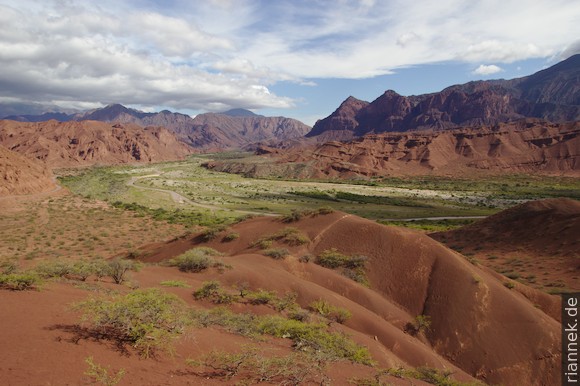
South of Cafayate, the same intramontane basin is called “Santa Maria”. Even further south, it is connected by a valley to the neighbouring El Cajón basin. Since the Los Cardones National Park is also located on the pass road between Cachi and Salta, this results in a beautiful triangular route for which you should allow 3 days.
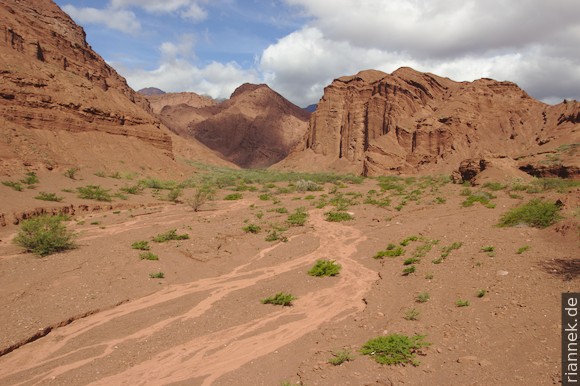
The Quebrada de Cafayate (Quebrada de las Conchas) can easily be explored along the main road from Salta to Cafayate, but it gets interesting from Alemania onwards. The valley leads through particularly colourful and partly bizarrely eroded rock formations, mainly sandstones and mudstones, but also limestone in places. These sediments were deposited in a rift valley during the Cretaceous period.
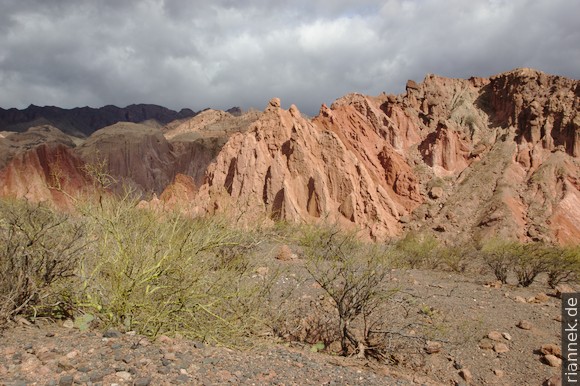
Again and again, signs invite you to a viewpoint. The “amphitheatre” is a rock cauldron in the limestone, accessible through a short gorge. Otherwise, however, it is above all the colours that are enchanting.

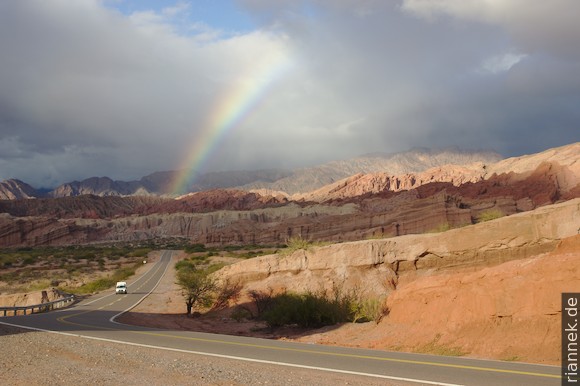
For details on the geology of the region, I refer to my book The Formation of Mountains.

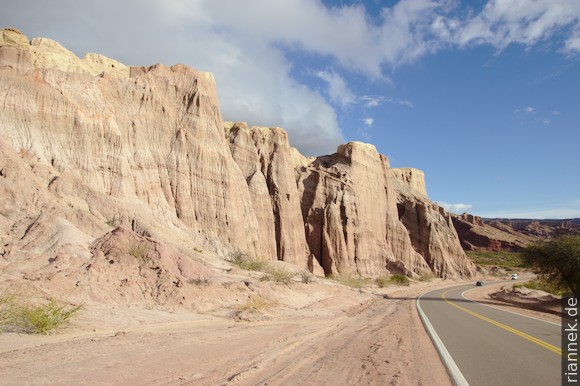

Cafayate is a pretty town with a pretty main square and lots of wine. A little further south, we also visit Quilmes. The ruins of a settlement of the tribe of the same name, which was completely wiped out by the Spanish, stretch up a mountainside at the side of the basin.
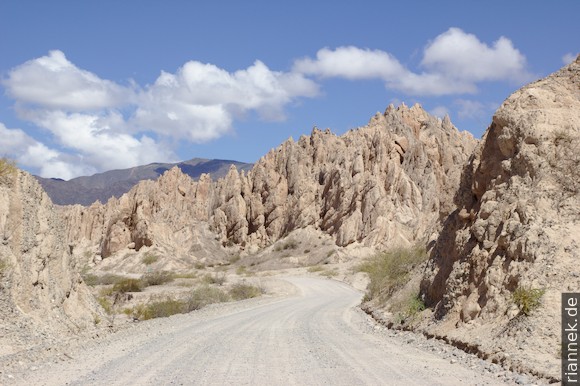
On the way north from Cafayate, a first stop in the somewhat sleepy colonial town of San Carlos is worthwhile. Later, the steep light beige sediments come into view, the most interesting part of which just before Angastaco is called Quebrada de la Flecha, a desert full of arrowheads. Angastaco is a green oasis with a pretty church.
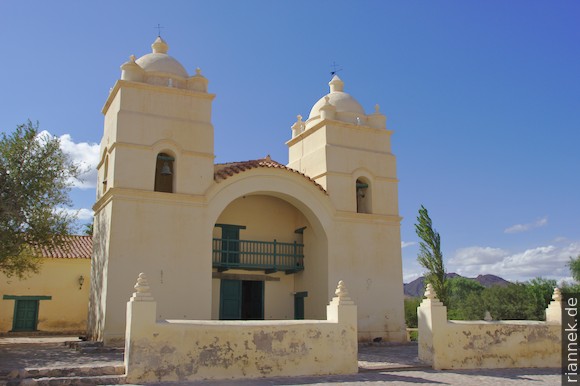
The next village is Molinos, where not only the Cusco-style church is worth a visit, but also the little streets next to it. After that, it’s many more winding and dusty kilometres to Cachi.

Cachi is the prettiest town in the area, not only because of the well-preserved colonial houses, but also because of the relaxed atmosphere and the pretty surroundings. Behind the town rises the snow-covered 6380 m high Sierra de Cachi (in this area the highest peaks of the Eastern Cordillera of the Andes).
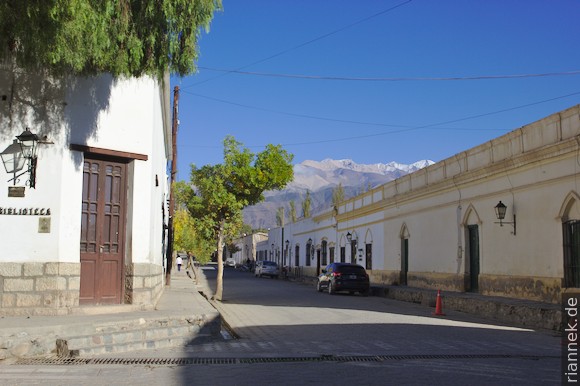

From Cachi, we follow the valley north for a few more kilometres and then turn west onto the asphalt road towards Salta. We climb a bit until we reach a plateau where countless cacti grow: the Los Cardones National Park. To be honest, I am a little disappointed by this one, I have seen much prettier collections of cacti in Argentina. For example, just before the national park, where you can still see the Sierra de Cachi in the background, which then disappears a little further behind a hill.
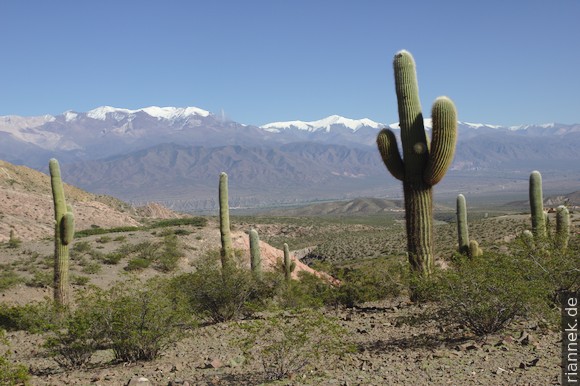
Or also at the pass road between Tafi del Valle and Amaicha (south of Cafayate, via which we had come to Cafayate). Or in the Quebrada de Humahuaca. However, it is still worth getting out of the car, if only to read the explanatory panels. From the cacti, the road climbs a little further before descending in countless switchbacks into the lush greenery on the other side of the pass (where more cacti grow on the mountainsides). At the bottom, it is not far to Salta.

I also found Salta a bit disappointing, I couldn’t understand why so many travellers rave about this city (or do they mean the surroundings?). Perhaps it was because it was a Sunday and the city was almost deserted, with a rather grey sky.
Read on
Quebrada de Humahuaca
Talampaya and Ischigualasto (Valle de la Luna)
At the toe of Aconcagua
Iguazú Falls
Patagonia